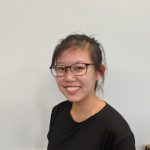Advertisement
Discussion (6)
What are your thoughts?
Learn how to style your text
Reply
Save
It depends on the type of pre existing condition.
Reply
Save
Elijah Lee
21 Mar 2023
Senior Financial Services Manager at Phillip Securities (Jurong East)
Hi Hui Juan,
There are many of my clients who have managed to get coverage with a pre-existing c...
Read 3 other comments with a Seedly account
You will also enjoy exclusive benefits and get access to members only features.
Sign up or login with an email here
Write your thoughts
Related Articles
Related Posts
Related Posts
Advertisement









If you're wondering https://canadianinsulin.com/product/ozempic-sem..., there are several options available. You can purchase semaglutide through licensed pharmacies with a valid prescription from a healthcare provider. Online pharmacies are also a convenient choice, but ensure they are reputable and require a prescription. Additionally, some clinics specializing in weight management may offer semaglutide as part of their treatment plans, making them another avenue to explore. Always consult a healthcare professional before starting any medication.